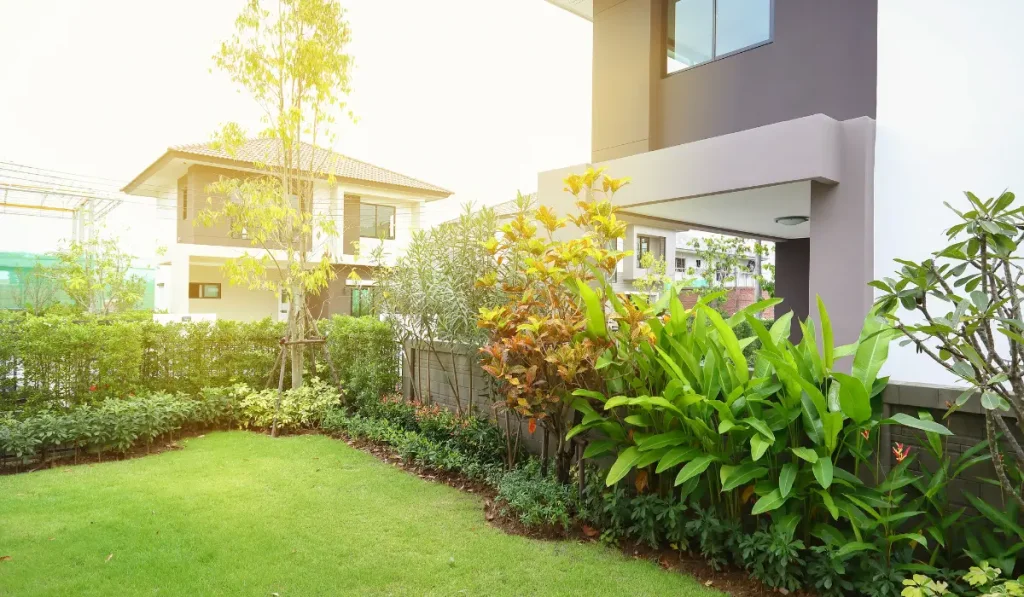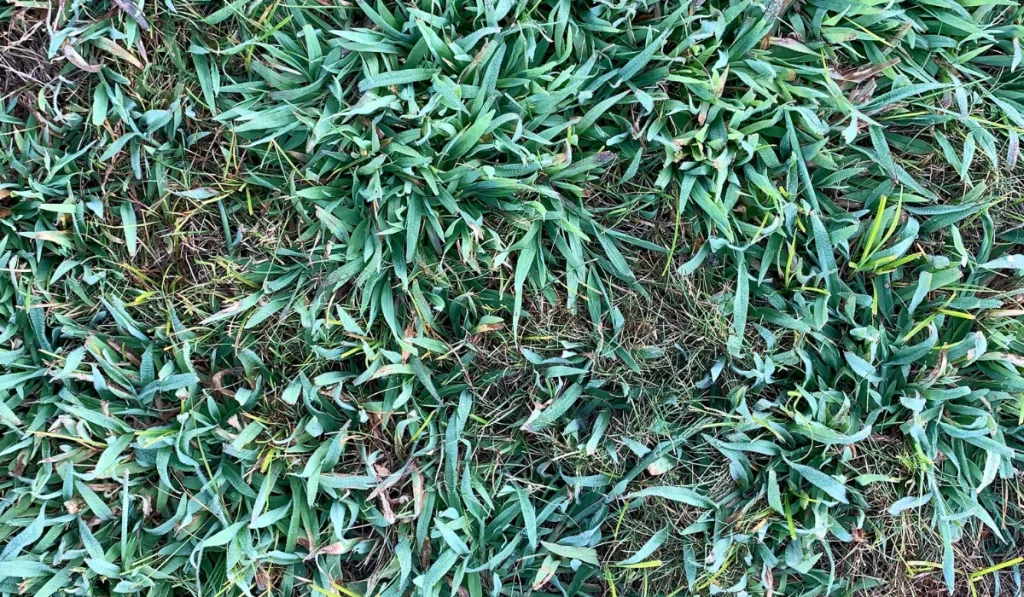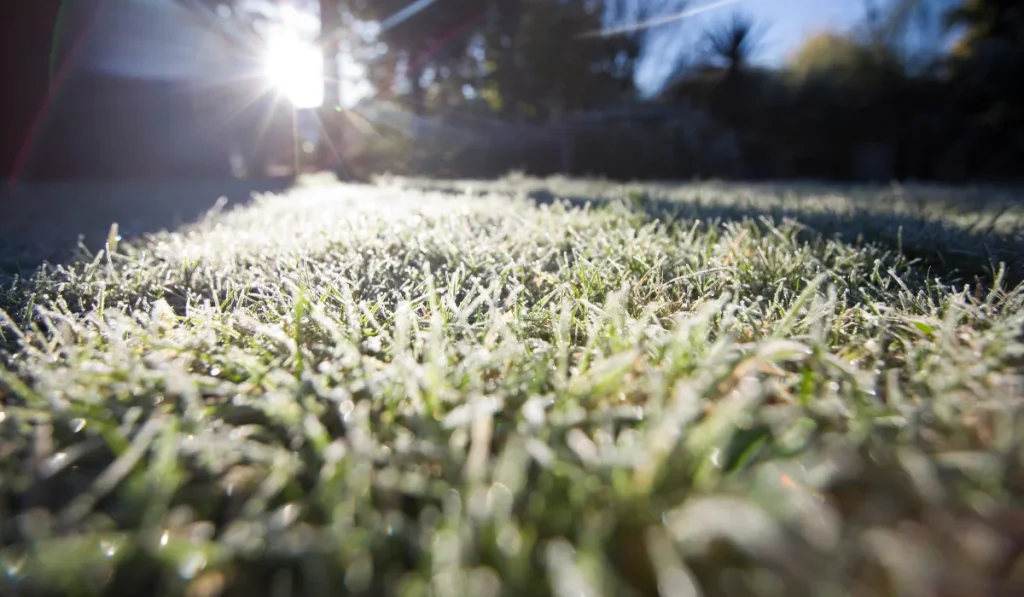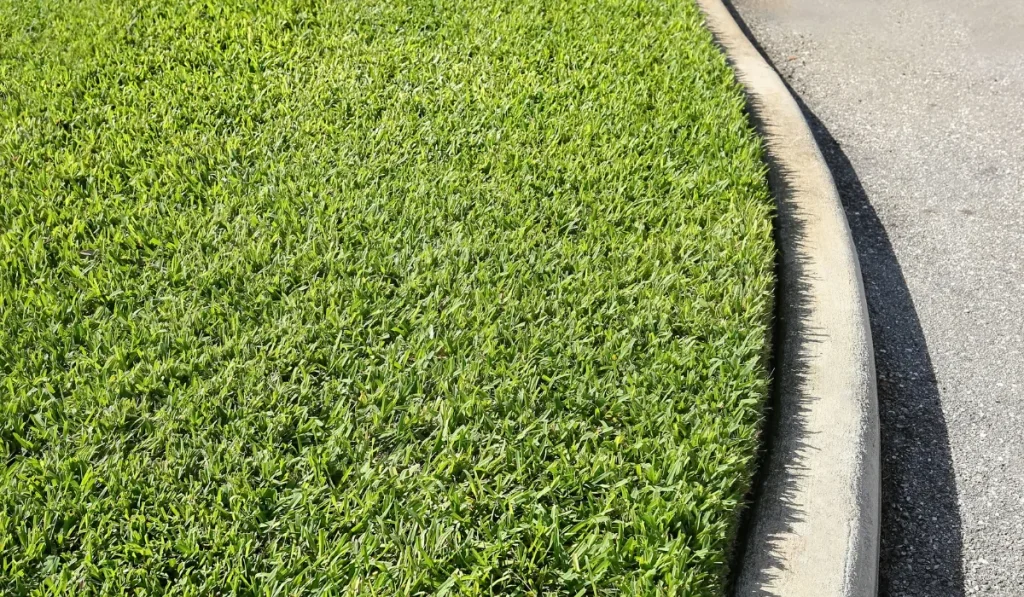Many homeowners know and loathe the struggle of working diligently to maintain healthy grass only to see different shades of green, yellow, and brown decorate their lawns. You’re not alone if your grass can’t seem to decide between light green, dark green, and straight-up brown.
A few key problems might be at play, all of which you can remedy by seeking professional lawn care services like those from Sodlawn.
Let’s explore some of the reasons your lawn might be different shades of green and what you can do about it.
Key Takeaways
- Different colors throughout your grass can indicate different problems. For example, yellow and light green grass might result from too little water or nutrients, while dark green grass likely points to a lack of sunlight.
- The main issues that can change your grass color include irrigation problems, sunlight problems, nitrogen deficiencies, and natural weather changes. You can minimize the impact of these factors by keeping your lawn healthy year-round.
- Cut the grass regularly, remove weeds, water regularly, and consider aerating your soil to help yourself maintain a fully green lawn.
Your Grass Is Different Shades of Green – What Does That Mean?
Some slight variation in the color of your lawn is probably nothing to worry about. But if your lawn looks like a mosaic of rich, healthy green grass, patches of yellow and light green grass, and dead spots, one of the following problems is likely to blame.
Irrigation Problem
Grass needs a consistent supply of water to grow continuously. If your lawn isn’t getting enough water, you may see grass turning yellow or notice grass blades beginning to wilt and lighten. Eventually, unless you fix the problem, they will become brown and die.
“If some parts of your lawn are greener than others, it could be a watering issue,” says the Sodlawn expert, Amber Ayers. “Check to make sure all areas of your lawn are getting equal amounts of water regularly.”
Remember that areas in direct sunlight might need more water than others, as they likely get dried out faster.
Nitrogen Deficiency
Just like your body, your lawn needs nutrients to survive. A deficiency of one or more nutrients can have a visible impact on your lawn’s health.
Nitrogen is one key micronutrient that affects lawn color; too little of it usually leads to yellow grass that grows unevenly.
Lawns with alkaline soil are also prone to iron deficiencies, which may cause yellow or “bleached” spots throughout your lawn. Conduct a soil test and add appropriate fertilizers to restore a healthy nutrient balance on your lawn.
Not Getting Enough Sunlight
Your grass is green thanks to a handy pigment called chlorophyll. Without it, plants wouldn’t be able to create food and survive. Chlorophyll molecules attach to the membrane of disc-like structures, known as chloroplast, inside plant cells.
It’s here where photosynthesis, the process where light energy is converted to chemical energy, takes place. But sunlight is a key ingredient in that chemical energy recipe.
Too little sun can cause your grass to appear dark green because it produces more chlorophyll to create the energy it needs. Think of it like a math equation: if chlorophyll, sun, and water create energy, and the energy needs of the grass remain consistent, a drop in one area demands a spike in the others.
That’s why you might see dark patches of grass in areas that are usually shady.
It’s Chilly Outside
Just as you have to work diligently to maintain your lawn in higher temperatures, you’ll need to adjust your lawn care routine for colder weather.
“Warm-season lawns will turn yellow when soil temperatures hit 55 degrees and below,” adds Ayers, “and [these lawns] will not green up again until spring, when soil temperatures go above 55 degrees.”
How to Care for Your Lawn – and Its Color
Sometimes, the factors causing lawn discoloration may be somewhat out of your control. But you can keep your lawn in prime shape and lessen the impact of natural changes by following these essential lawn care tips.
- Mow the lawn regularly. When your grass reaches around 2.5 to 3.5 inches, it’s time to give it a trim. Try not to cut too much, though; mowing past 2 inches or lower can weaken your turf and increase pest problems. Mowing your lawn around once a week works for most homeowners. Don’t be afraid of lawn clippings, either — returning them to your lawn can recycle nutrients your soil may need desperately.
- Fertilize at the right time. Apply a lawn fertilizer suited to your soil and the type of grass you’re using to ensure the area has plenty of nutrients. You don’t need to slap down more fertilizer every month, though. Pay attention to the recommendations on your fertilizer to judge timing based on where your soil is currently at.
- Water your lawn regularly. Keep on top of watering your lawn evenly. Lawns will begin to lose their green color during prolonged dry spells, so take extra care to water thoroughly when it’s been a while without any rain. You can also choose to irrigate your lawn.
- Clean up. Remove weeds whenever you see them, and do what you can to prevent pest infestations and lawn diseases. Cutting down vegetation, clearing out leaf litter, and using landscaping as a barrier around your lawn can help you keep the bad stuff out and the good stuff in.
Tips for Preventing Lawn Discoloration
In addition to doing your best to maintain a healthy lawn, what can you do to keep your grass color consistent and green? First and foremost, make sure you avoid the common problems we’ve already discussed: water your lawn regularly, give it the nutrients it needs, and adjust your care strategy based on the season. These additional tips can help you prevent some of those issues before they arise.
- Consider dethatching and aerating your lawn. Detaching dense lawns can loosen up organic material on the surface of your soil and ensure your grass grows tall and strong. You can use a dethatching machine to get the job done, or you can use a lawn aerator, which loosens things up so your soil can access fresh air.
- Choose the right soil. Most turfgrasses like soil with a pH of 6.0 to 7.0. Make sure you don’t use soil that’s too acidic for healthy grass growth.
- Consider moving furniture around your yard so that the same areas aren’t constantly blocked from direct sunlight.
- Address pet damage to your lawn sooner rather than later. For instance, if Fido tends to use the same area to do his business every day, you might need to give that spot some TLC. Clean up after pets and ensure they don’t dig or rip into your lawn.
If you’re still not happy with your lawn’s appearance, it might be time to seek the opinion of a lawn care professional. No matter what grass species you’re caring for, a team like Sodlawn can help you get your lawn back on track so you can enjoy lush, vibrant green for years to come.



